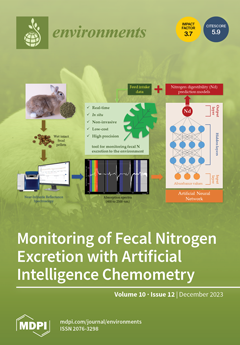The aim of the present study was to evaluate the wild freshwater fish health status using a vast array of biomarkers as predictive factors of pollutant exposure. The European eel (
Anguilla anguilla) and brown trout (
Salmo trutta fario), resident in rivers with different degrees of pollution in the South of Italy (Picentino River with good environmental quality and Tusciano River with low environmental quality), were examined using biometric parameters, histopathological and immunohistochemical biomarkers to evaluate the health status and a possible correlation with the water quality. Several alterations identified in the liver positively correlated with water and soil pollutants: hemorrhage (
p ≤ 0.05), cytoplasmic vacuolization (
p ≤ 0.01), hemosiderosis (
p ≤ 0.05), irregular arrangement of hepatocytes (
p ≤ 0.01), lipid accumulation (
p ≤ 0.05), necrosis (
p ≤ 0.01), cellular hyperplasia (
p ≤ 0.05), leukocyte infiltration (
p ≤ 0.01) and melanomacrophages centers (MMC) (
p ≤ 0.01). In the spleen, only hemosiderosis correlated with water and soil pollutants (
p ≤ 0.05). The inflammatory biomarker tumor necrosis factor α (TNFα) and ciclooxigenase 2 (COX2) responded to the environmental pollution, as well as the oxidative stress biomarkers superoxide dismutase (SOD2) and 8-Hydroxy-2′-deoxyguanosine (8-OHdG). Erythrocytic nuclear abnormalities and erythrocytic cellular abnormalities were found to be significantly higher in the blood of both the European eel (
p < 0.0001) and brown trout (
p < 0.001) in the Tusciano River compared with the Picentino River. Taken together, these results outline the need to increase the number of suitable biomarkers to assess fish health and reinforce the importance of employing additional biomarkers in biomonitoring programs that can be applied to evaluate water quality and in environmental assessment around the world.
Full article





